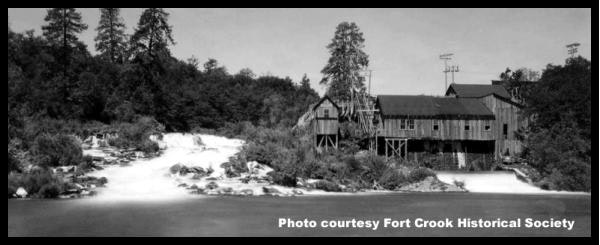History
The earliest water system in the town of Fall River Mills was operated by the Red River Lumber Company. They had a mill on Fall River just upstream of the falls. Water was taken from the run of the river and distributed through a system of tanks and pipes to the residents. Charles Straub purchased the water company in 1904 and operated it relatively unchanged until Pacific Gas and Electric Company began to develop the Pit River for electricity. With the construction of Pit River Powerhouse #1 in the early 1920s, the necessary intake structure was built to deliver water to the powerhouse. In about 1923, a pipe was installed to deliver water from the intake to a sump located across Long Street from Straub’s residence. Straub constructed four water tanks of redwood elevated on towers on some of the high ground around town. Two were adjacent to the Fall River Mills Fire Department, one was on the Dodrell property near the present location of the Fort Crook Historical Society, and one was built in 1922 on the hill behind Straub’s residence. After forty years of service, the one on Straub’s property was deemed unserviceable and demolished with some difficulty by the local fire departments. None of the wooden tanks remain standing. The district is now served by 3 large tanks with a combined capacity of 600,000 gallons.

On Feb 20, 1961, the Fall River Mills Community Services District was created to continue supplying safe, quality water to the residents of Fall River Mills. In the 1970s, the district was enlarged to include land adjacent to Highway 299 between Fall River Mills and McArthur as well as the town of McArthur. A well was drilled on land north and east of McArthur that continues to supply excellent water to the residents of the district today. In 1979, a bond was issued for the construction of a sanitary sewer system to serve the residents of Fall River Mills and a portion of the businesses and residences east of town. The treatment facilities are located near the airport. This system protects local groundwater and surface water from contamination caused by poorly situated septic tanks, and serves as a reminder of the District’s commitment to continue to provide the kinds of services the residents of the area expect and deserve.

This information was obtained from interviews with George Ingram, Robert Ingram and Willy Brown. An article in the Intermountain News of April 5th, 1962 was also used, as well as some information obtained from the Shasta County website.

